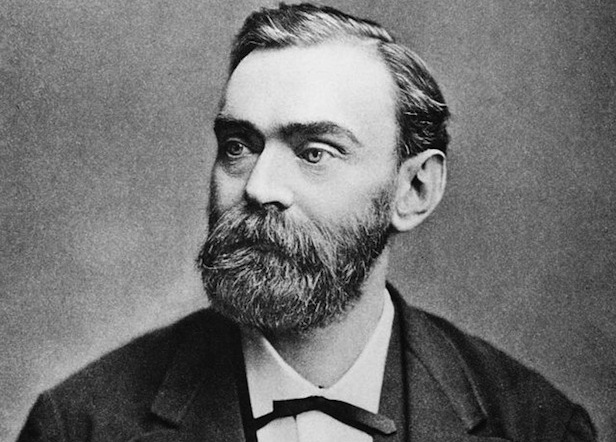Alfred Nobel was born into poverty in Sweden as the fourth son of eight children, of which only four survived past childhood. The family hit upon sudden wealth when they moved to St Petersburg and Nobel’s father was employed as a explosives manufacturer. Because of their newfound wealth they were able to fund Nobel’s passion and talent for chemistry with private tutoring. Nobel eventually moved to Paris and then the United States to study with other successful chemists, dedicating his time to the study of explosives. Nobel was primarily concerned with nitroglycerine, but during one of his experiments an explosion killed five people, including his brother. Determined to continue, Nobel invented dynamite in 1867, which he proclaimed was far safer than nitroglycerin; he decided against the original name of “Nobel’s Safety Powder.”
Nobel was honoured for his inventions as a member of the Royal Swedish Academy of Sciences and went on to issue 350 patents and build 90 armaments factories – although he insisted he was a pacifist. When Nobel’s brother died, a French newspaper mistakenly believed it was Albert who had passed away and wrote a scathing obituary stating: “The merchant of death is dead” and said his lasting legacy was “finding ways to kill more people than ever before.” This profoundly affected Alfred who made a decision that he would leave a better legacy than the one he had read.
Nobel himself was known as a solitary character and often suffered from depression, which is perhaps why none of his friends or family had any idea that he left his immense wealth in a trust to find the Nobel Prizes. The awards were designed to be awarded every year with no distinction of nationality, and today are worth a massive £296 million ($472 million).
To discover the secret history of more famous people of history, pick up a copy of All About History today.
